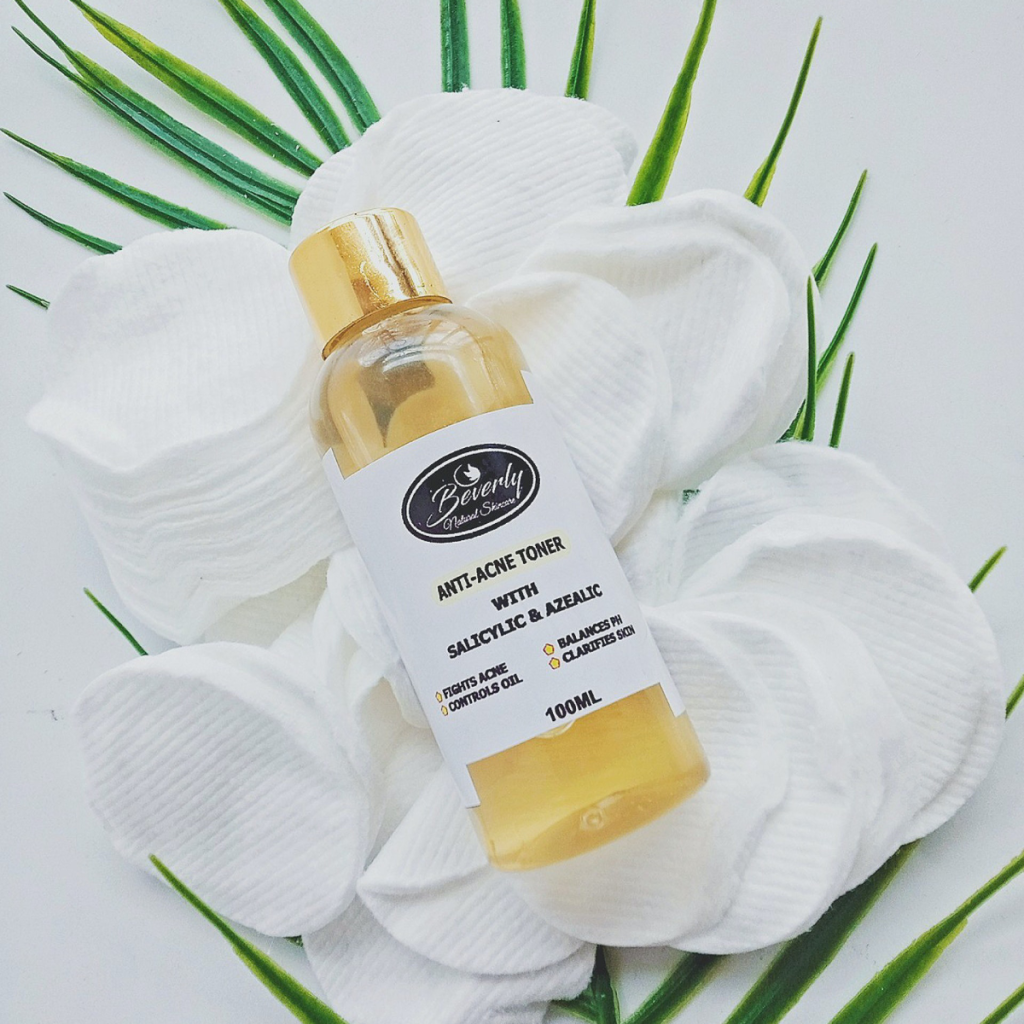Discover the optimal frequency for using toner in your skincare routine with this comprehensive guide.
How Often Should You Use a Toner? A Guide to Proper Toner Usage
Toner may seem like a mysterious part of skincare, but fear not, we are here to demystify it for you! In this guide, you will learn everything you need to know about toner and how often you should be using it. So sit back, relax, and let’s dive into the wonderful world of toner!

Understanding the Role of Toner in Skincare
Before we get into the nitty-gritty, let’s start by understanding what exactly a toner is. Think of toner as the secret weapon in your skincare routine. It is a liquid product that is designed to remove any remaining traces of dirt, makeup, and impurities that your cleanser may have missed. Toner also helps to balance the pH level of your skin, leaving it refreshed and ready to absorb the goodness of your serums and moisturizers.
Now that we know what toner does, let’s talk about why it is so important in your skincare routine. Toner not only helps to prepare your skin for the next steps in your routine but also helps to shrink the appearance of pores and refine the texture of your skin. It can also provide hydration, soothe irritation, and even help to control excess oil production. In short, toner is like a multi-tasking superhero for your skin!
One of the key benefits of using toner is its ability to balance the pH level of your skin. Our skin has a natural pH level of around 5.5, which is slightly acidic. However, factors such as pollution, harsh cleansers, and even tap water can disrupt this balance and make our skin more alkaline. Using a toner with a slightly acidic pH can help to restore the natural balance of our skin, which in turn can improve the overall health and appearance of our complexion.
Additionally, toners can be a great way to provide hydration to the skin. Many toners are formulated with ingredients like hyaluronic acid, glycerin, and aloe vera, which are known for their moisturizing properties. These ingredients help to attract and retain moisture in the skin, keeping it plump and supple. By incorporating a hydrating toner into your routine, you can give your skin an extra boost of moisture, especially if you have dry or dehydrated skin.
Another benefit of using toner is its ability to soothe irritation and inflammation. Toners that contain ingredients like chamomile, green tea extract, and witch hazel have calming and anti-inflammatory properties. They can help to reduce redness, soothe sensitive skin, and alleviate any discomfort or itchiness. If you have acne-prone or sensitive skin, using a toner with these soothing ingredients can be a game-changer in your skincare routine.
Furthermore, toners can also help to control excess oil production. People with oily or combination skin often struggle with shine and a greasy complexion. Using a toner that is specifically formulated for oily skin can help to regulate sebum production and keep your skin looking matte and fresh throughout the day. Look for toners that contain ingredients like salicylic acid or tea tree oil, as they have oil-controlling properties.
In conclusion, incorporating a toner into your skincare routine can have numerous benefits for your skin. From balancing the pH level to providing hydration, soothing irritation, and controlling excess oil, toners are a versatile product that can address various skin concerns. So, if you haven’t already, consider adding a toner to your daily skincare regimen and let it work its magic on your skin!
Identifying Your Skin Type
Before we can determine how often you should use a toner, it’s important to identify your skin type. Everyone’s skin is unique, and what works for one person may not work for another. Let’s take a closer look at the different skin types:
Normal Skin
If you have normal skin, consider yourself lucky! Normal skin is well-balanced and doesn’t tend to be too oily or too dry. You can use a toner twice a day to maintain your skin’s harmony.
Normal skin is characterized by a smooth and even texture. It has a good balance of moisture and oil production, which helps keep the skin hydrated and healthy. People with normal skin often have small pores and a radiant complexion.
When using a toner for normal skin, look for one that is gentle and alcohol-free. This will help maintain the skin’s natural pH balance without causing any irritation. A toner with hydrating ingredients like hyaluronic acid or rose water can also provide an extra boost of moisture.
Dry Skin
Dry skin requires extra care and hydration. Opt for a hydrating toner and use it morning and night. It will help to replenish moisture and prevent your skin from feeling tight and flaky.
Dry skin lacks oil and moisture, which can make it feel tight, rough, and sometimes itchy. It is often characterized by fine lines, redness, and a dull complexion. People with dry skin may also experience flaking or peeling.
When choosing a toner for dry skin, look for one that is rich in moisturizing ingredients like glycerin, aloe vera, or ceramides. These ingredients will help to hydrate and soothe the skin, leaving it feeling soft and supple.
In addition to using a toner, it’s important for those with dry skin to follow a skincare routine that includes a gentle cleanser, a moisturizer, and a sunscreen to protect the skin from further dryness and damage.
Oily Skin
If you have oily skin, toner is your best friend! Use a toner twice a day to help control excess oil and keep your skin feeling fresh. Look for toners that contain ingredients like witch hazel or tea tree oil to help balance sebum production.
Oily skin is characterized by an overproduction of sebum, which can leave the skin looking shiny and feeling greasy. People with oily skin often have enlarged pores and are more prone to acne and breakouts.
A toner for oily skin should have astringent properties to help control oil production and minimize the appearance of pores. Ingredients like witch hazel, salicylic acid, or tea tree oil can help remove excess oil and prevent clogged pores.
Using a toner for oily skin can also help to remove any remaining dirt or makeup residue after cleansing, leaving the skin feeling clean and refreshed.
Combination Skin
Combination skin can be a bit tricky to deal with, as you have both oily and dry areas. To keep things in balance, use a toner twice a day. Focus on the oily areas like your T-zone and be gentle on the dry areas.
Combination skin is characterized by having oily skin in some areas, typically the forehead, nose, and chin (known as the T-zone), and dry or normal skin in other areas, such as the cheeks. This can make it challenging to find the right skincare products that cater to both skin types.
When using a toner for combination skin, it’s important to focus on the oily areas to control excess oil production and minimize the appearance of pores. Look for a toner that is specifically formulated for combination skin, as it will help balance the skin without stripping away moisture from the dry areas.
For the dry areas of combination skin, it’s important to follow up with a moisturizer to provide hydration and nourishment. Using a lightweight, non-comedogenic moisturizer will ensure that the dry areas are moisturized without causing breakouts in the oily areas.
Overall, finding the right toner for combination skin may require some trial and error, as everyone’s skin is unique. It’s important to pay attention to how your skin reacts to different products and adjust your skincare routine accordingly.
How Often Should You Use a Toner?
Now that you know your skin type, let’s talk about how often you should be using a toner. As a general rule of thumb, using a toner twice a day, once in the morning and once in the evening, is ideal. This will ensure that your skin stays clean, balanced, and ready to absorb the other products in your routine.

Toner Usage for Different Skin Types
While using a toner twice a day works for most skin types, there may be some exceptions. If you have dry or sensitive skin, you may want to start by using a toner once a day and see how your skin reacts. If it feels too drying or irritating, reduce the frequency to every other day or even a few times a week.
On the other hand, if you have oily or acne-prone skin, you may benefit from using a toner more frequently. Try using it in the morning, after cleansing, and then layering it again in the evening after removing your makeup. Just make sure not to overdo it, as excessive use of toner can strip your skin of its natural oils and disrupt its balance.
The Best Time to Apply Toner
Now that you know how often to use a toner, let’s talk about the best time to apply it. Ideally, you should use toner right after cleansing your face. This will ensure that any residual dirt or impurities are removed and your skin is prepped for the next steps in your routine. Remember to be gentle when applying toner, using a cotton pad or simply patting it onto your skin with your hands.
Choosing the Right Toner for Your Skin
With so many toners available on the market, it can be overwhelming to choose the right one for your skin. Here are a few tips to help you make the right decision:
Ingredients to Look for in a Toner
When it comes to ingredients, it’s always best to opt for natural and gentle formulas. Look for toners that contain hydrating ingredients like hyaluronic acid, soothing ingredients like aloe vera or chamomile, and antioxidants like green tea or vitamin C. These ingredients will not only help to balance your skin but also provide additional benefits.
Avoiding Harmful Ingredients in Toners
While we’re on the topic of ingredients, let’s talk about what to avoid in toners. Stay away from toners that contain alcohol, as they can be drying and irritating to the skin. Also, be cautious of toners with artificial fragrances and colors, as they can be sensitizing. Always read the ingredient list before making a purchase.
Common Mistakes in Toner Usage
Now that you know how to choose the right toner and use it properly, let’s discuss some common mistakes to avoid:
Overusing Toner
More is not always better, especially when it comes to toner. Using too much toner can strip your skin of its natural oils and disrupt its delicate balance. Stick to the recommended amount and frequency for your skin type.
Using the Wrong Type of Toner
Not all toners are created equal, and using the wrong type for your skin can do more harm than good. Make sure to choose a toner that is specifically formulated for your skin type and concerns.
So there you have it, a complete guide to toner usage! Remember, skincare is a journey, and what works for someone else may not work for you. Listen to your skin, experiment with different products, and most importantly, don’t forget to have fun along the way!





